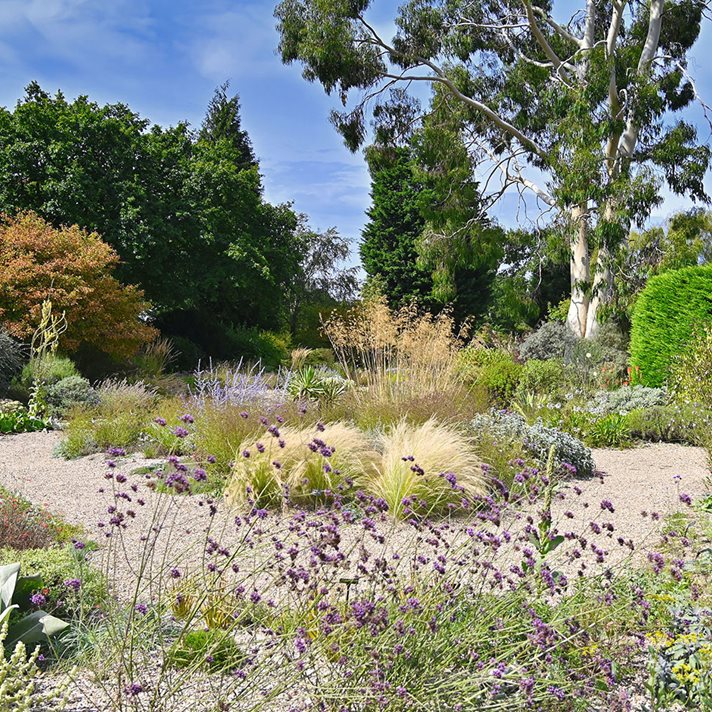Xeriscaping

Garden trends in the last year have seen further interest in Xeriscaping, no doubt affirmed by last year’s drought. This may or may not be a term you are familiar with, but as we see more evidence in our weather patterns of climate change, it is sure to be a phrase you will come across again.
The definition of Xeriscaping is to practice of designing gardens and landscapes to reduce or eliminate the need for irrigation, so when established, they should require no more water than what the climate can offer. Xeric refers to an environment or habitat containing little moisture. This style of garden originated in the hot, dry regions of the United States.
Water conservation is the starting point. Maximise any natural rainfall there is by collecting and directing with water butts, tanks and by capturing any run-off from paved areas into natural features such as berms and swales. Reduce the need for irrigation by selecting plants for the climatic conditions and aspect you have without the need for further watering once established. This needs careful consideration as with our wetter and colder winters plants hailing from the Mediterranean aren’t always the answer. As I write this article it’s currently January and feels like it will never stop raining, but at least our ground is building up its moisture reserves ready for whatever spring and summer should bring.
Quality of the soil goes a long way too to success. Many naturally occurring Xeric plants require few nutrients to survive. The soil should be improved when first planting up, but over feeding leads to flopping plants with many woody types, especially those from the Med, proving short lived from too much food.
Reducing or eliminate the grass and replacing with tough groundcovers such as
Ajuga reptans or
Alchemilla mollis or maybe opt for an area of gravel. By selecting stones of 14mm or bigger you avoid cats using the areas as a litter tray.
Mulching plants to conserve moisture and prevent evaporation can be done with both organic material such as compost or non-organic gravel, both will achieve the same results.
Overall, this type of garden tends to be low maintenance. Grouping plants together by their moisture requirements helps further so you could try planting varieties requiring more moisture at the bottom of a slope as ground water will naturally gravitate downwards. Areas in sun will also have different levels of moisture to those in shade. Monitoring for pests will be required more during dry spells and for fungal diseases during wet periods.